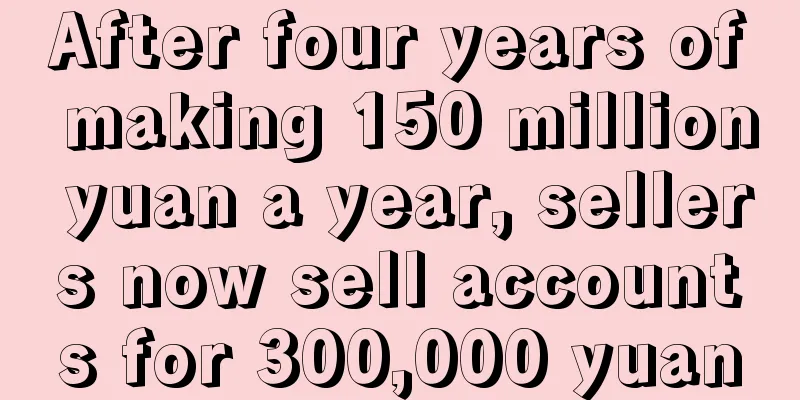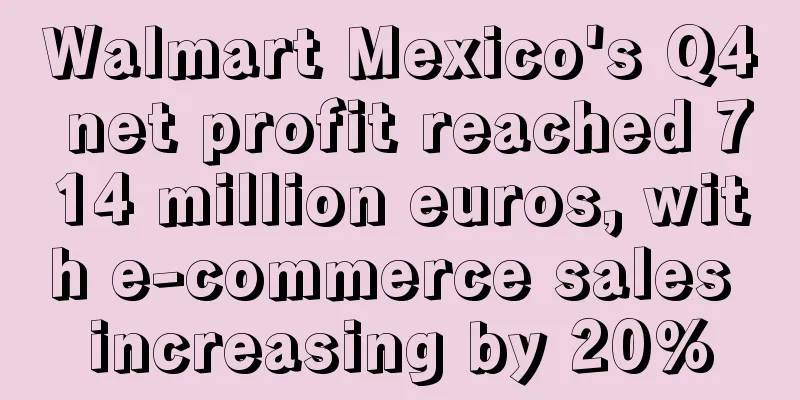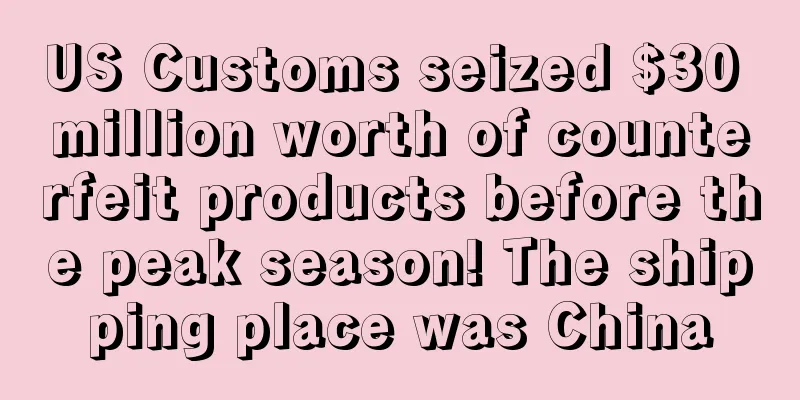After four years of making 150 million yuan a year, sellers now sell accounts for 300,000 yuan

|
Some people say that today's Amazon is like a tall fruit tree. In the past, one could pick the fruits by just standing on tiptoe. But as the low-hanging fruits have been gradually picked, it now requires more effort to pick the fruits high up. One must use a unique vision to capture the hidden fruits and pick more fruits than competitors.
This is indeed the reality. From the earliest extensive operation of traffic dividend period to the high-growth era spawned by the epidemic, many cross-border merchants have seized the opportunity and entered the fast lane of growth by following the right time and place.
However, as the industry enters the second half, the fruits of cross-border e-commerce are no longer readily available. For this reason, some people forge brand ladders, continue to climb and reap great rewards, while others climb with bare hands but accidentally fall.
The online consumption boom brought about by the 2020 epidemic dividend has driven a large number of Amazons to experience explosive growth in performance, and seller Jason (pseudonym) is one of them.
Jason joined Amazon in 2017. It took him only 4 years to grow from an annual sales of 10 million to a GMV of 150 million. Recalling those years of rapid growth, Jason could not hide his pride: "Our performance grew by 100-150% almost every year."
At that time, the industry was not as standardized as it is today, and it was easy to place orders by adopting an extensive operation model. Jason revealed that his work content during that period was very simple: looking at reports, setting goals, holding weekly meetings to implement, follow up, give feedback, and make corrections.
Due to the explosion of industry opportunities and the fact that Amazon has not yet strictly controlled gray practices such as fake orders and reviews, new products in its store spend 20 euros/dollars/pounds on advertising every day, get 10-20 reviews, and have a product promotion success rate of over 50%.
2020 was the peak year for Jason's career. Driven by the epidemic, the sales of his Amazon business soared by 200%. However, the soaring performance also confused countless Amazon sellers, including Jason, who did not realize that the dividends from the epidemic had overdrawn the growth in the following years in advance.
Due to his blind optimism about the industry's growth prospects, Jason made a wrong move: the company's scale expanded vigorously in 2021, from more than 20 people to more than 50 people.
However, the good times did not last long. The European market began to collect taxes. Due to the miscalculation of consumption, 40 million tons of goods were overstocked, and the profit was directly reduced from 20% gross profit to 1-5%, and the net profit also dropped from 10% to negative 10%. For Jasan, which accounts for 90% of its business in the European market, this is undoubtedly a heavy blow.
In order to ensure stability, Jason did not operate the EU account in 2021 and 2022. Until the end of December 2021, there was still a backlog of 20 million goods. Under the double buff of tax costs and low-price inventory clearance, Jason's profits were in the red all the way.
However, by the time Jason realized that something was wrong and started laying off employees, cutting products, and reducing the scale of business, it was already too late. It took from 2022 to the beginning of 2024 for his store to completely sell out its inventory.
However, in the process, Jason once again made a fatal mistake - ignoring the humanistic care of employees. Due to the continuous loss of profits, he made many "transformed" actions: reducing base salaries and commissions, and proposing a more stringent assessment system. In the end, his core employee team began to fall apart. Even if new people were introduced, they were faced with the dilemma of being unable to adapt to the fiercely competitive environment and conservative operating methods.
"The shape of the Chinese character "人" and the mountain are the simplest truths in the world. How fast you reach the peak, how fast you will fall. When the stock price goes from the bottom to the peak, it will definitely go from the peak to the bottom. The same goes for running a company. There are no evergreen companies, only companies of the times. You can make money for 5 years, but to make money for 10 years you need very precise adaptability." Jason said with emotion.
It only took Jason three years to plummet from sales of 150 million at its peak to 3 million.
Now Jason has decided to take a break to adjust his mentality, and sell the Amazon account he has worked hard to manage for five years for a transfer fee of 300,000. From starting from scratch and diving into the Amazon industry, to seizing the opportunity to achieve soaring performance, and then falling from grace after the high-growth bubble burst, Jason's story is actually a microcosm of many Amazon sellers.
For many veteran sellers who have been in the industry for many years, they have experienced ups and downs in the torrent of constant changes in the industry. In that era of gold digging everywhere, high-end cross-border sales often only needed to adopt a simple operation method - a rough method of mass distribution supplemented by some small "gray methods" to easily increase sales.
However, the account blocking wave in 2021 has become an important turning point. Under the iron fist of the platform's risk control, illegal behaviors such as fake orders and reviews that secretly helped sellers to quickly gain momentum in the past have been completely exposed to the sun. For this reason, taking the path of white hat operations and following the mainstream of branding upgrades has become an inevitable choice.
However, the road to transformation is not easy to implement. Many sellers like Jason who fail to discover problems and adjust their operating strategies in time fall into a period of growing pains. On the one hand, during the bonus period of the epidemic, the company was confused by the temporary high growth and misjudged the consumption prospects. It expanded the company's scale and over-stocked. Finally, due to sluggish market demand, it fell into the quagmire of inventory backlogs and profit losses.
On the other hand, trapped in the inherent extensive operation thinking, the company has products but lacks brand accumulation, so it has failed to build a solid barrier in the increasingly fierce competition.
Now, 2024 is already halfway through, and for many Amazon employees who are on the road, the road to brand upgrade and refined operation is still long and arduous. A very important reason behind this is that the era of making money everywhere is a thing of the past, and the stock competition in the industry is still intensifying.
For many sellers, the biggest feeling this year is that the internal competition has become more intense. "The market volume is very low and has not returned to the previous normal level. Especially in the US site, the competition is extremely fierce. The unpopular categories in previous years have begun to be competitive this year, with all kinds of low prices + high CPC bombardment."
Another seller said bluntly: "No matter whether it is a big site or a small site, they are all very popular, offering low prices and advertising aggressively. It is bound to be more difficult for charity sellers to return to the market this year."
The performance of sellers can also give us a glimpse of the situation. According to the survey initiated, in the first five months of 2023, as many as 77% of sellers saw a decline in revenue, of which 40% saw a decline of more than 30%. Overall, more than 60% of sellers had revenue and profits that were lower than expected in the first half of the year.
The ever-changing market and the impact of macro-uncertainty have caused cross-border merchants to face multiple operational challenges. However, under high pressure, sellers still need to be steady, abide by platform rules and adapt to market changes in a timely manner, and they will eventually rebound. |
<<: Amazon’s inventory was sold out overnight, and the sellers were devastated!
>>: Costco's leadership changes will usher in major changes to its digital business
Recommend
What is UGREEN Technology? UGREEN Technology Review
Shenzhen UGREEN GROUP LTD. is a national high-tech...
What is a preferential tariff? Preferential tariff evaluation
Preferential tariffs refer to tariffs where a coun...
Breaking news! Amazon is about to launch a free video production function
text This function is Video builder video product...
What is EAN? EAN Review
The barcode standard designated by the European Ar...
Nothing was done, but traffic and sales both dropped? Use the detection method quickly!
Recently, I have heard people talking about the d...
Revealed! New directions of Amazon's popular categories that you don't know about!
Amazon’s popular categories and niche products Rec...
What is GoPay? GoPay Review
GoPay is a financial subsidiary of Go-jek. It is t...
The epidemic has escalated! "Hard lockdown", power cuts and production suspension, how do cross-border people survive the cold winter?
The arrival of winter has exacerbated the situatio...
Thousands of trademarks exposed! A Shenzhen company actually applied for trademarks in the name of a deceased lawyer?
▶ Video account attention cross-border navigation ...
Amazon backend update! These US orders will also be taxed!
The US Amazon backend has updated the latest sale...
What is TOMTOP? TOMTOP Review
TOMTOP (Shenzhen Tongtuo Technology Co., Ltd.) was...
What changes are American consumers experiencing in the post-epidemic era?
It is learned that the US research institution Dot...
How to search for similar products on Amazon through pictures? Do you know these four methods?
Amazon App In the Amazon App, there is a camera-l...
Europe and Japan also restrict shipments! My brother-in-law is still sending red flags like crazy. Is a new round of account suspension coming?
After the US site was restricted from shipping, t...
What is ManoMano? ManoMano Review
ManoMano is a gardening DIY e-commerce platform th...









